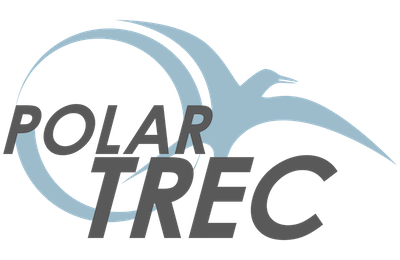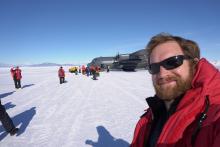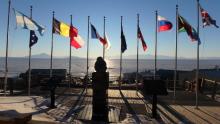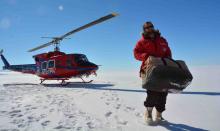Update
Now Archived! Antarctica Day Celebration event with Tim Dwyer and Dr. Art Woods live from McMurdo Station, Antarctica. You can access this and other events on the PolarConnect Archives site: https://www.polartrec.com/polar-connect/archive
What Are They Doing?

Where Are They?
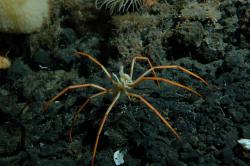
Latest Journals

Dr. Woods studies climate change and the physiological ecology of invertebrates. The first major theme in his lab is temperature-oxygen interactions in marine invertebrates, focusing particularly on polar gigantism of sea slugs and sea spiders. He studied gigantism in sea slugs during field seasons at McMurdo in 2006 and 2007, and is currently funded to work on gigantism in sea spiders. The second major lab theme is the physiological ecology of plant-insect interactions, and he particularly focuses on climate change in the microhabitats where insects live. He is an associate professor at the University of Montana (Woods lab page).

Dr. Moran studies the physiological ecology and evolutionary ecology of marine invertebrates, with a particular focus on early life history stages – embryos and larvae. One major area of emphasis is the effects of temperature on the energy dynamics of growth and development, and in recent years she has studied polar gigantism in both sea slugs and sea spiders. A second area of emphasis is the effects of temperature on growth, development, and success in many invertebrates including barnacles, sea urchins, worms, and snails; current work in Hawaii also looks at the effects of warm-water events and bleaching on the reproductive success of corals. She is an associate professor at the University of Hawaiʽi at Mānoa. (http://www.moranlab.org)

Dr. Tobalske studies comparative biomechanics of and functional morphology of animals. His research involves laboratory and field-based methods to measure three-dimensional motion, fluid dynamics, muscle physiology, material properties and structural design. One major area of his research involves bird flight, with current studies on escape maneuvers in hummingbirds, high-speed maneuvering in swallows, and the development of locomotion in nestling and fledgling birds. His work with invertebrates has included studies of the cost of sexually-selected weapons in beetles, and he is currently funded to study the mechanical consequences of gigantism in sea spiders. He is an associate professor and the director of the Field Research Station at Fort Missoula at the University of Montana. Tobalske lab page
